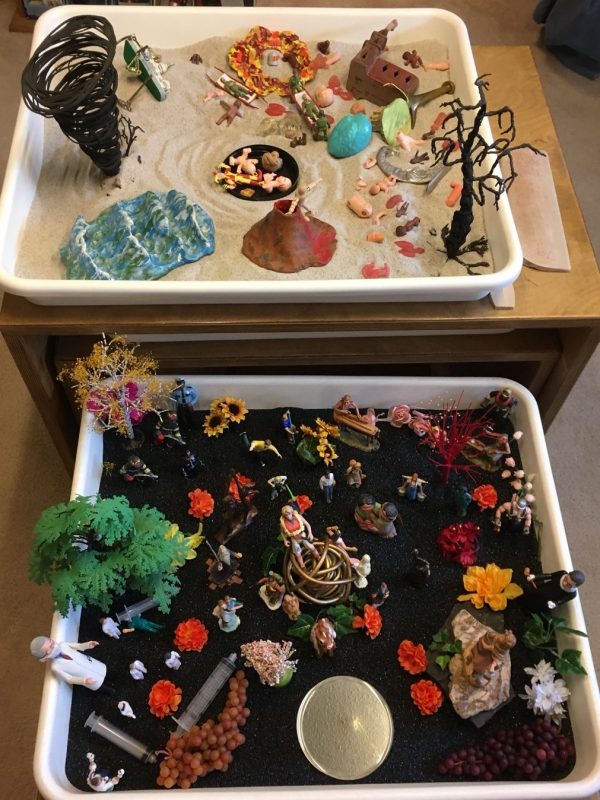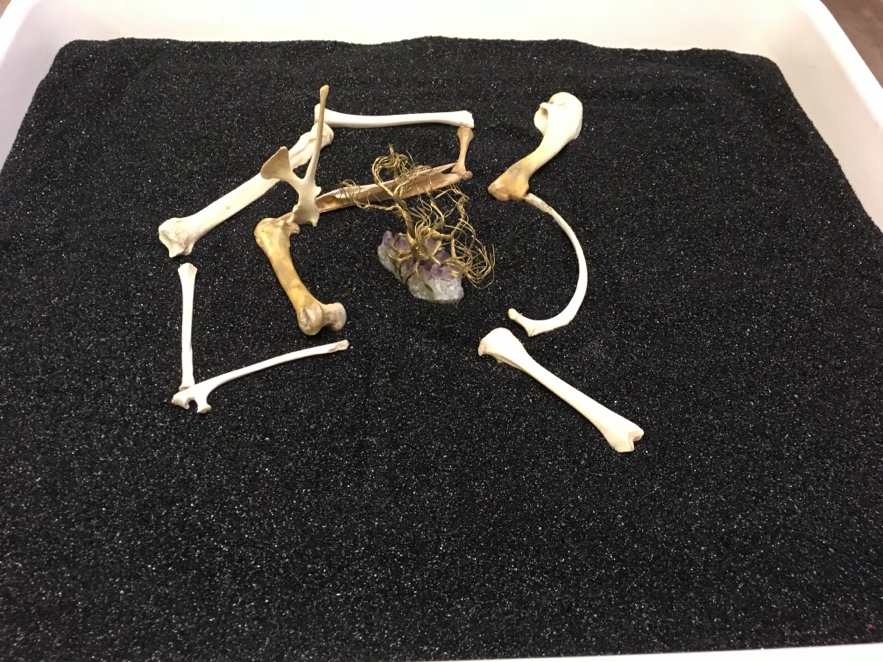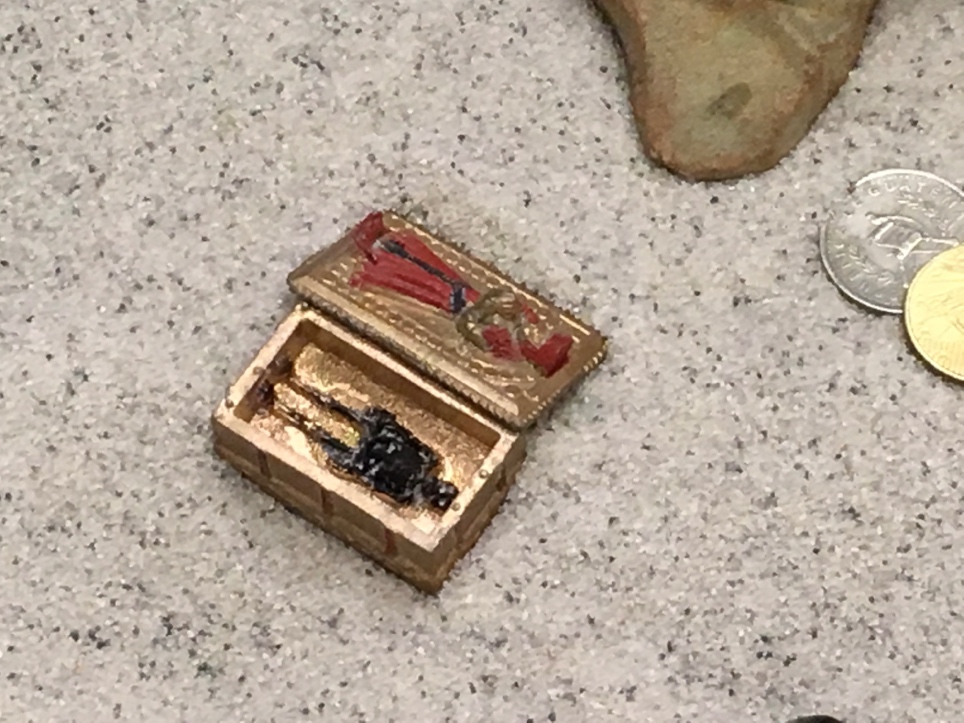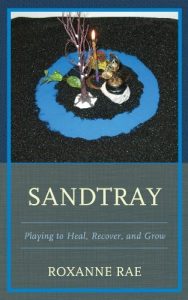In this blog I share ways a therapist can use the details of the play or Sandtray experience to help people’s growth and healing. I offer my thoughts and several vignettes, including dynamic play with children, to demonstrate why I believe details can be the key to change.
The way I work in play therapy and Sandtray includes noticing everything in great detail. I still take note of general themes and patterns but address them more often toward the end of sessions with adults. Attending to minutia not only refers to the actions of the play, but also the moods, expressions, choices, sounds, energy, and focus of the player/creator and what each of those evoke in me. During the play, I’ve learned the value of noticing detail and continue to hone my skills to invite the player/creator to notice more detail, connecting more deeply to the experiences they have portrayed. These new associations can foster learning and growth.
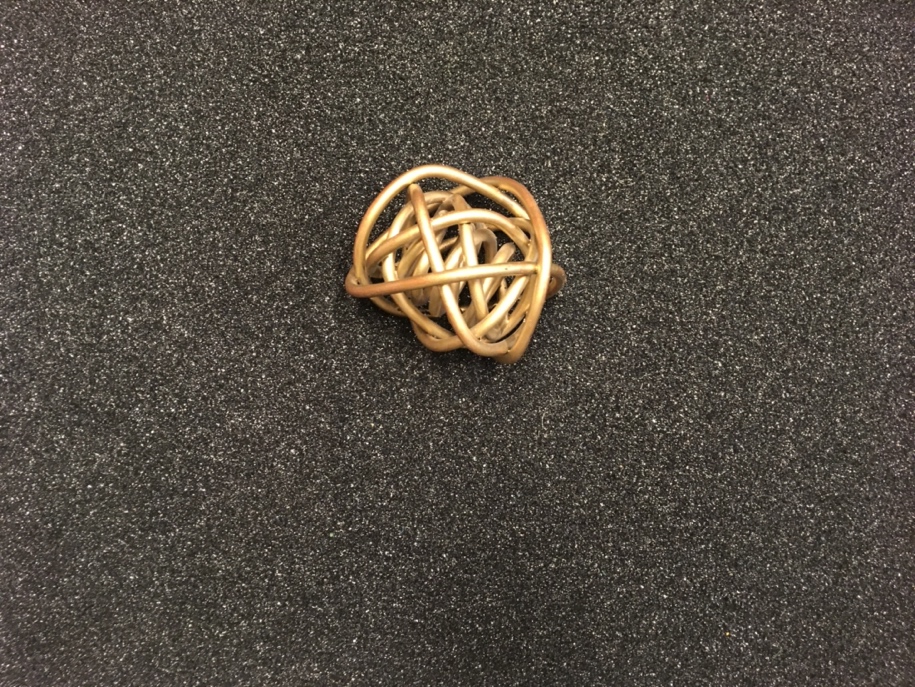
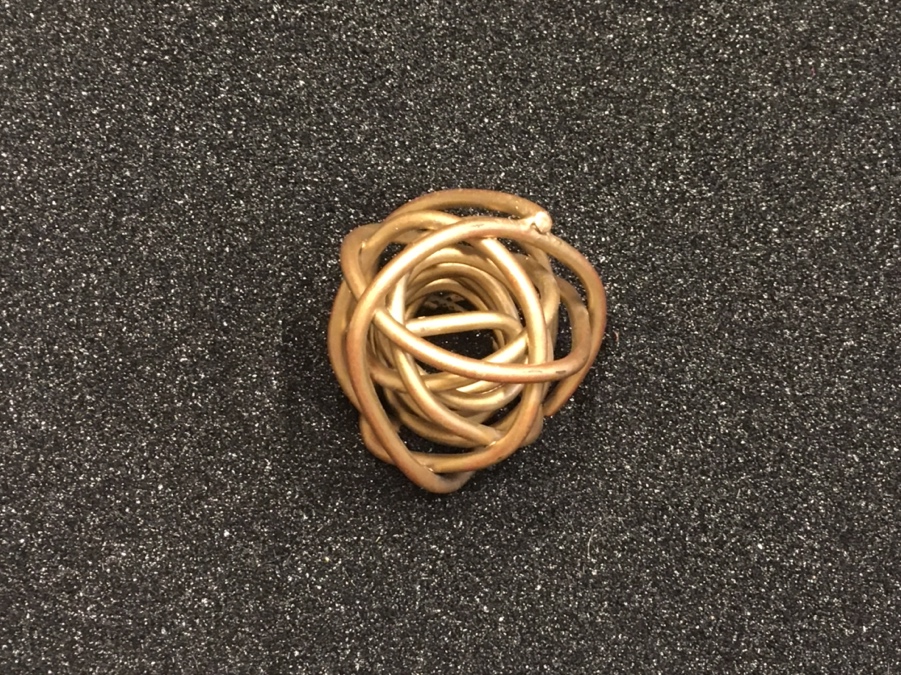
For example, Figure 1 shows a complicated double sand tray. I am only focusing on a single object that became key to the player’s forward movement, release of internal tensions, and a return to a sense of agency. Figures 2 and 3 show the first miniature placed in the second tray of black sand. What can’t be seen is how heavy this piece is, one of the heaviest in my collection. The intent of the player was to condense the suffering and chaos depicted in the top (white sand) tray into the “mess” of this single item (Figure 2). The creator sat and pondered this choice for several minutes before shifting its position to that shown (Figure 3). What was later shared about this change is that in the initial position there was no hope, no way out of the “mess we’ve made in the world.” After rolling it over, an opening for transformation became apparent. A space for helping elements appeared (Figure 4).
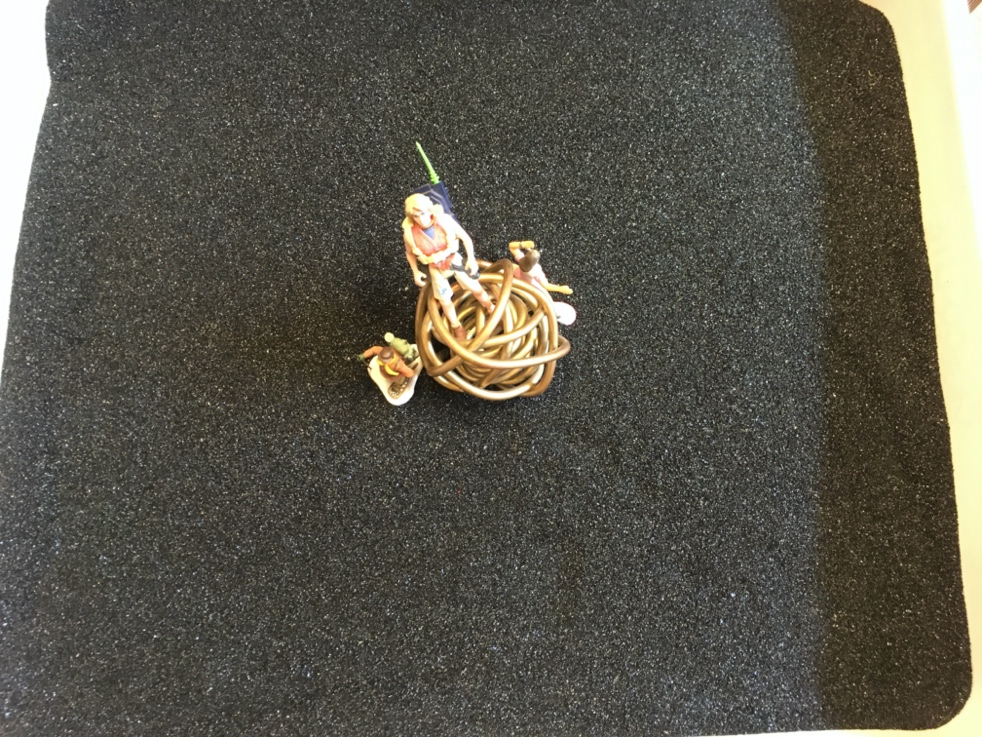
Personally, I need to observe my tendencies to become over curious about the drama unfolding in the play, to make judgements, or to assign meaning. To do so serves my need or meaning and not the player’s. This focus also interferes with the energetic support that I intend to provide. Early in my training I wanted to know everything that was going on in the play. This desire led me to ask too many questions, and in the Sandtray process, to tend to jump around the world. I’ve discovered asking questions more likely interrupts the player’s flow as it pulls for a left-brain hemisphere response when I am wanting to encourage more right-brain hemisphere expression. Some children have told me to stop asking questions, while others will answer compliantly and continue to play. Still others just ignored me.
It is important to notice the player’s body, particularly if they turn away from us or move between us and their play space. After learning the Lowenfeld Sandtray techniques my approach to play therapy changed. Rather than questions, I found that I learned more about the play using the reflective/directive techniques and those skills that move us into the play, along with the conscious use of silence. Eventually, I was able to integrate the skill of moving with the player into the experiences portrayed, rather than thinking so hard about what to do next. This fundamentally requires using our intersubjective resonance with the player as a primary tool.
Both examples below (Figures 5 and 6), are examples of dynamic play with children. I attend to how this play is coming together. Does the child use me for technical advice in their production? Are they working with me or requiring that I be solely an observer? Do their verbalizations appear to be connected to what they are doing or creating in the play? Are we having a dialogue about what they are creating and what it means to them? Along with many more observations. When possible, I make a map of the play in my notes, similar to those I take during a Sandtray session.
If a dialogue is occurring, many aspects can be explored. In active, primarily nonverbal play with children we can learn to reflect the action without using naming or judging language. For example, “that one is on top;” “that one is covering more;” “that one is ahead of that other one who is behind;” “That one is far from the other ones;” “they are all in a pile.” The therapist can often discover the purpose of actions, power dynamics, conflicts, feelings, needs, etc., through these reflective/directive techniques.
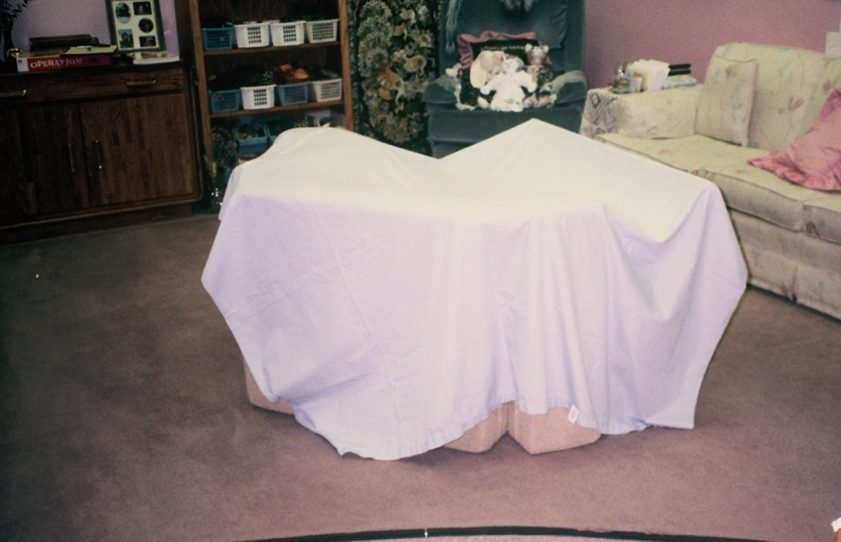
In figure 5 the child elicited my support to create a “fort.” I eventually learned the child’s intent was to create a place that could provide quiet and comfort from their chaotic outside world. The child then played with making their own boundaries, choosing when and how to interact face-to-face or solely through voice, inviting contact or hiding from it. During this session I reflected on some actions and observations which prompted a few words of reply and gave me enough information to have a shared dialogue toward the end of the session. During this play the child began to learn how to listen to their internal self or “inside voice” and identify what their own needs were. This child carried a Polaroid photo from the session to hold on to the safety that was created. In the security of the playroom this type of experimentation can occur without the child being bombarded by external demands.
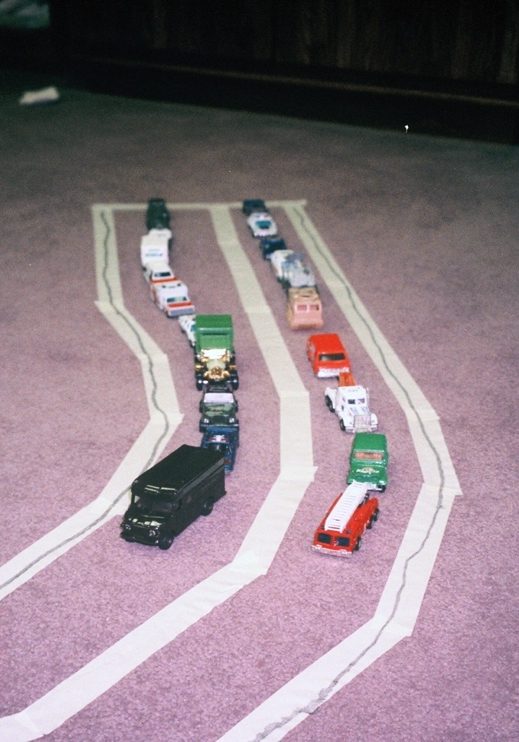
In figure 6 the child was striving to understand structures and rules and their place in relationship to them. I was directed to help make the roads (with masking tape). Play was interactive and the struggles of the vehicles to follow within the lines without crashing, or causing others problems, was shared, in part through my reflection of details. Prior to this more orderly appearing photo, all of the vehicles experienced being mixed up, going the wrong way or in circles, and making other drivers mad. There were many pile ups and much chaos. As simple as this play may appear, this child formed this pattern of play repeatedly before being able to integrate enough learning to impact positively their school and home behaviors.
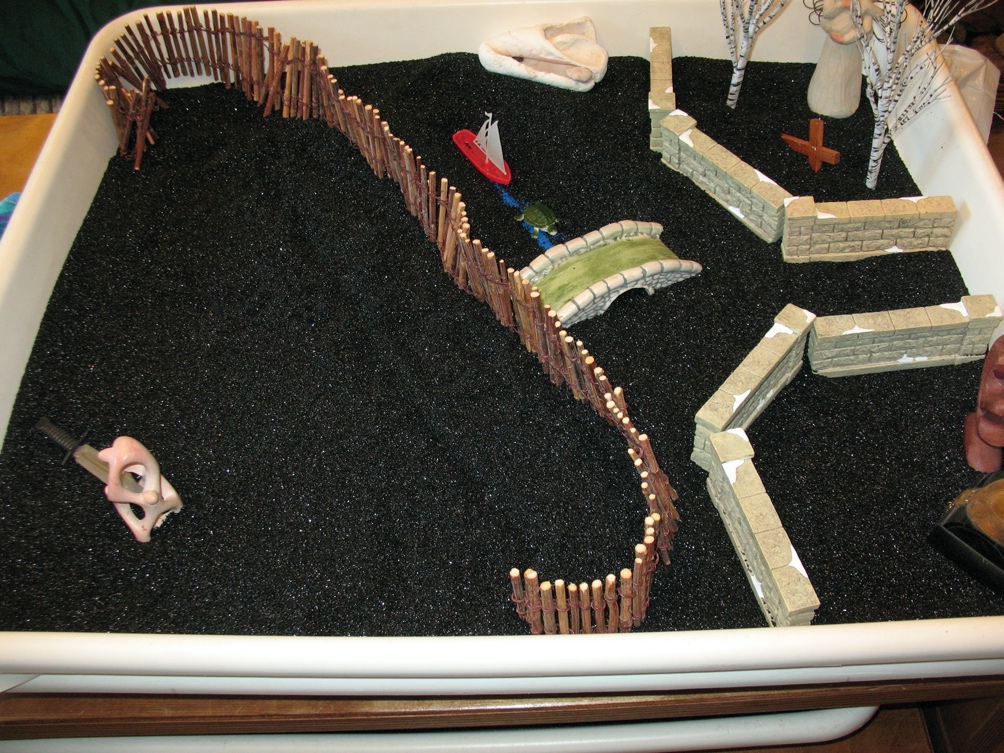
In the previous blog about April, a trauma victim, I could discern little movement in her play (Figure 7). Yet when she made micro movements with the turtle, and began just speaking about his views, major changes were shifting inside her. Just to acknowledge that the turtle knew everything in the world was a shift in her awareness that facilitated her becoming “unstuck” (see blog #5 for details). Some therapists believe that for change to occur they need to see physical movement, or a progression of observable (to them) change for the session to be of value. Some professionals even direct this external change believing that an internal shift will automatically occur. At times such externally directed change may be useful, and I have experienced this to be so myself as a creator. Directives may also just illicit a player/creator’s compliance. With April, I could have invited her to have the turtle peek through the wooden fence and look toward the tower of people and the knife. My sense, however, was that such a directive approach would have evoked a retraction in this person who was just beginning to open up to herself. I generally take the stance that the player/creator should be supported in taking the lead and that I am present as a witness to aid them in harvesting their own internal wisdom. Trauma victims need our support for gradual self-exposure so that they do not become flooded or overwhelmed by experiencing new associations too intensely.
In the Sandtray process the details of what miniatures a person chooses may become informative in itself and may form another layer of detail worth exploring. When we are choosing our Sandtray or play objects, our brains are processing details so fast that many do not come into the conscious mind. Our choosing is often based on wholistic, global, right brain functioning that bypasses the required paths into active consciousness. I often have quickly chosen an object thinking that I knew its meaning in the world, only to discover later that its deeper meaning for me was quite different. Once, in training, I chose a pewter warrior woman walking in stride. To me her qualities were strength, determination, and tenacity. Only later as I was led to connect and deepen my experience with her did I see for the first time that she held a man’s head in her hand by its hair. What a shock that was to my consciousness mind!
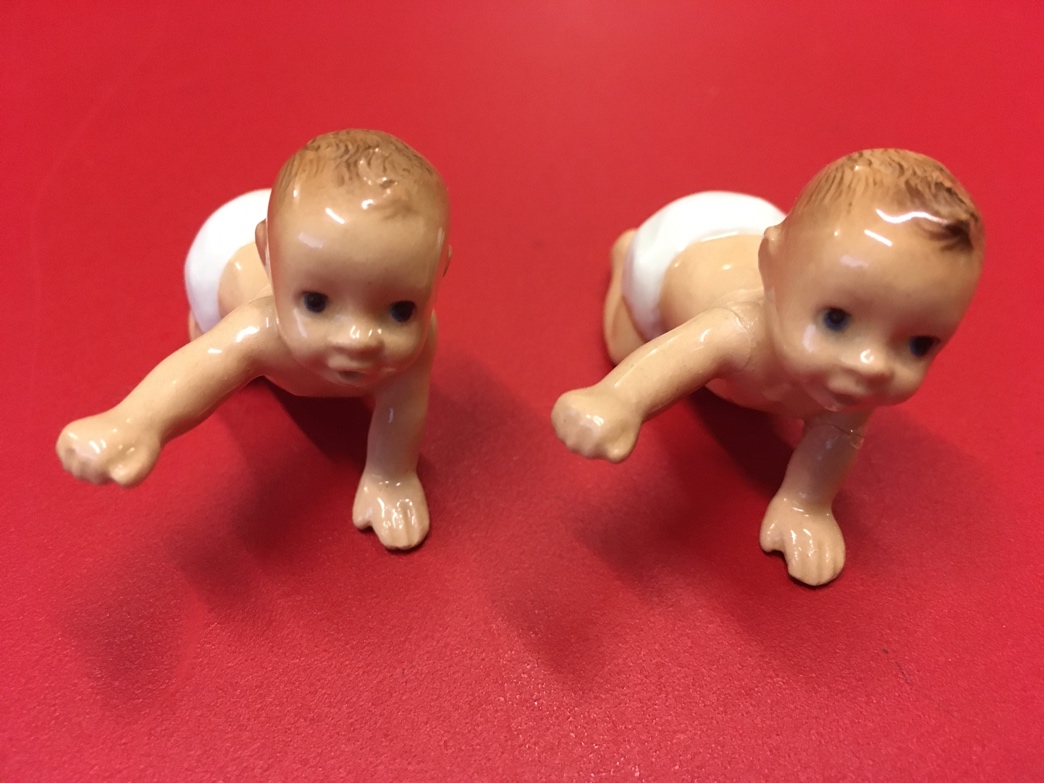
For another example, in my collection I have two babies that appear to be duplicates sitting together on the shelf (Figure 8). On closer inspection it can be seen that one has had a broken arm repaired. Sometimes which of these figures chosen is not significant, but at others this detail has become informative for the player. Should this miniature later become important in the creator’s story, exploring the choice of which baby was picked up can further deepen meaning. Sometimes the person made their choice after noticing the break, and at other times this detail offers greater opportunities to identify previously unknown or un-acknowledged experiences.
Whenever we help the creator of the play to move more deeply into the experiences they are forming, growth is advanced. In doing so, we aid the slowing down and being with habitual patterns, bringing them to more active consciousness. Then the player can begin to notice when or if these habits continue to serve them or not. Should the creator desire a change, a treatment plan can be formed that targets the transformation of unhelpful patterns and behaviors.

